From WBEZ:
An Architectural Tour of the Lakefront Bike Trail
What’s That Building? An architectural tour of the Lakefront Trail
Got a bike? Hit up the path along Lake Michigan — and keep your eyes peeled for architectural gems and important historical markers from the South Side to downtown.
Whether you’re biking, running or pushing a stroller, Chicago’s 18-mile Lakefront Trail has no shortage of sights to see. On one side there’s the always-changing beauty of Lake Michigan, and on the other there’s the cliff wall of apartment and condo buildings, office high-rises, museums, fountains and Soldier Field.
Other structures with intriguing histories also populate the path. Here’s a look at their stories, arranged from south to north. To stay focused and keep you moving, WBEZ’s Reset only included sites on the path, not those you can see from the trail.
Note: This list only encompasses structures from the South Side to downtown. Look out for a North Side edition next summer.
South Shore Cultural Center, 7059 S. South Shore Drive
The South Shore Cultural Center at 7059 S. South Shore Drive.
Anthony Vazquez/Chicago Sun-Times
Built in 1916 to replace the smaller clubhouse of a private organization with a nine-hole golf course, Marshall and Fox — the architects behind the Blackstone and Drake hotels — designed this Mediterranean fantasy. The Chicago Park District bought the South Shore Cultural Center in 1975. Two of the building’s most quintessentially Chicago moments are when it was used as The Palace Hotel in The Blues Brothers movie in 1980 and when it was the site of future President Barack Obama and future first lady Michelle Obama’s wedding reception in 1992.
Jackson Park Comfort Station, near 6700 S. DuSable Lake Shore Drive
The comfort station from 1912, about 40 feet long and a story high, is isolated on a knoll in the Jackson Park golf course, close to the shoulder of Marquette Drive.
Jason Marck / WBEZ
Little has changed with this crumbling relic of the early 20th century’s golf craze since Reset talked about the building in April 2021, as the structure has continued to decline. The park district has since put up signs saying, “Improvements coming soon.”
Jackson Park Harbor House, 6400 S. DuSable Lake Shore Drive
The Jackson Park Harbor House
K’Von Jackson for WBEZ
This building served as a Coast Guard station from 1902 to 1963, when the military branch passed it down to the Chicago Park District. After a fire in 1988, the structure was rebuilt and rehabbed, then opened in 1993 as a maritime museum and restaurant. That didn’t last, and now boats that utilize the harbor use the house as a fuel dock.
63rd Street Beach Pavilion, 6300 S. DuSable Lake Shore Drive
The 63rd Street Beach Pavilion at 6300 S. DuSable Lake Shore Drive.
K’Von Jackson for WBEZ
This grand classical beach house was built in 1919 but had been talked about since the 1890s, when Frederick Law Olmsted designed Jackson Park and wanted it to have a spectacular lakefront beach. The park district’s in-house architects are credited with designing the beach house. Though the structure doesn’t get much use these days, it’s handsome and monumental.
Powhatan, 4950 S. Chicago Beach Drive
The Powhatan is part of the Indian Village neighborhood.
Dennis Rodkin for WBEZ
Although we’re focusing on spots directly on the Lakefront Trail, the Powhatan stands out as an Art Deco tower with multicolored panels running up its façade.
Blue Bridges at 43rd and 41st streets
The 43rd Street Pedestrian Bridge connects East 43rd Street and South Oakenwald Avenue in the Bronzeville neighborhood with the Lakefront Trail.
Pat Nabong/Chicago Sun-Times
This pair of brightly colored, corkscrewing bridges signal a significant change in city leaders’ treatment of the South Side. During the 20th century, pedestrians had little direct access to Lake Michigan between McCormick Place and Hyde Park — especially compared to North Side residents, as former Chicago Tribune architecture critic Blair Kamin pointed out in 1998.
The bridges — opened at 41st Street in 2019 and 43rd Street in 2023 — are two very visible pieces of the remedy.
Eugene Williams Memorial, 2900 S. DuSable Lake Shore Drive
The Eugene Williams Memorial.
K’Von Jackson for WBEZ
Chicago’s searing 1919 race riots started here when a group of Black kids on a raft accidentally drifted into a section of the water meant only for white people. One of those kids, 17-year-old Eugene Williams, drowned after getting hit with a rock. His memorial is a small boulder with a plaque. The stone sits between two concrete sidewalks coming in from the lakefront to form a “V.”
McCormick Place Lakeside Center, 2301 S. Martin Luther King Drive
The McCormick Place Lakeside Center behind the McCormick Place Bird Sanctuary.
Pat Nabong/Chicago Sun-Times
McCormick Place Lakeside Center, the behemoth black component of Chicago’s convention center, starts the zone of giants along the lakefront path approaching downtown. Completed in 1971 with a 19-acre roof, the Lakeside Center replaced a 1960 building that burned. This colossus has an architectural pedigree: Mies van der Rohe’s right-hand man, Gene Summers, and famous modern Chicago architect Helmut Jahn designed the building.
Soldier Field, 1410 Special Olympics Drive
An aerial view of Soldier Field looking north toward the Chicago skyline.
Brian Ernst/Chicago Sun-Times
One could write a dissertation or two on the architectural history of Soldier Field, but because future chapters are being written right now, let’s leave it at this: The original war memorial stadium wrapped in columns opened in 1924, and the renovation that made it look like a cruise ship had crashed ashore opened in 2003.
Queen’s Landing, 500 S. DuSable Lake Shore Drive
Queen’s Landing with the Adler Planetarium seen in the background.
K’Von Jackson for WBEZ
Not much but concrete marks a visit by English royalty to Chicago. The wide plaza along the Lakefront Trail sits across the street from Buckingham Fountain. In 1959, Queen Elizabeth and her husband, Prince Philip, arrived for a 13-hour stay in Chicago after cruising down the recently completed St. Lawrence Seaway.
Columbia Yacht Club, 111 N. DuSable Lake Shore Drive
The Columbia Yacht Club ice breaker in DuSable Harbor.
Manuel Martinez/WBEZ
That big ship anchored beside the Lakefront Trail has been there since 1983, when the decommissioned ice-breaker and ferry from Nova Scotia was rehabbed into the Columbia Yacht Club. Built in 1947 and called the Abegweit, the boat could break three feet of solid ice.
Bridge over the Chicago River
Also called the FDR MemorialBridge, you cross the bridge, you pass through two brief tunnels. In 2020, they were cut into the bridge’s two limestone towers, built in 1937 to expand the space given to bicyclists and pedestrians. The change can be called a return to form: The bridge was initially built starting in 1929 not as a highway but to connect the lakefront parks north and south of the river.
Navy Pier Flyover
The tunnels were part of the larger Navy Pier Flyover project, which took years and millions of dollars more than originally planned. But all that is forgiven because the structure serves as one of the best and most-needed pieces of bike infrastructure in the city.
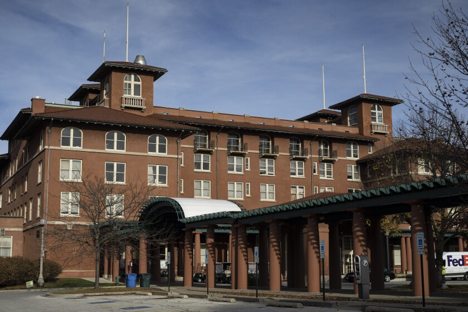

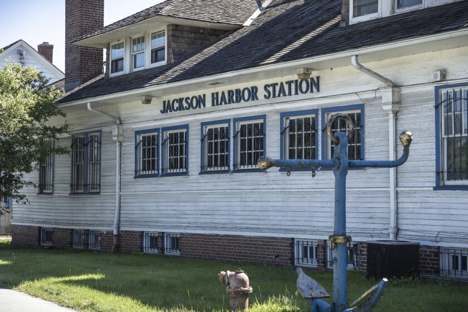






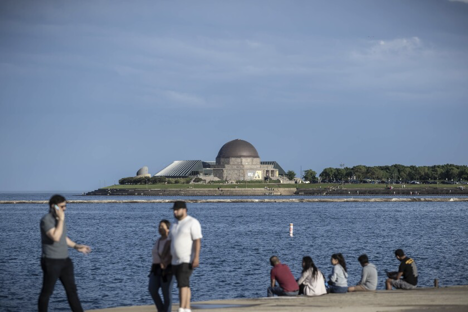
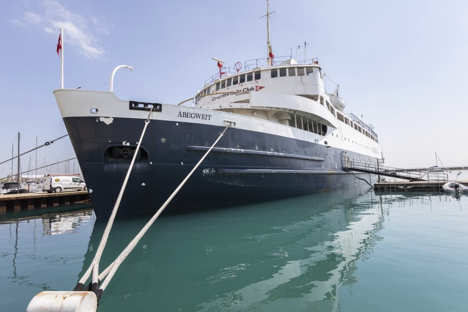
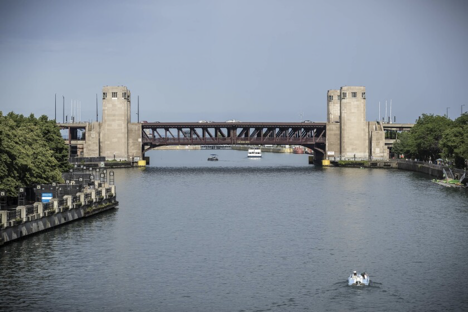
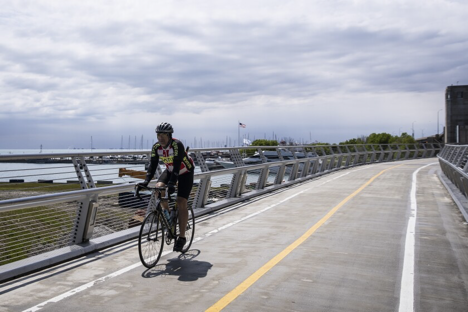
No comments:
Post a Comment